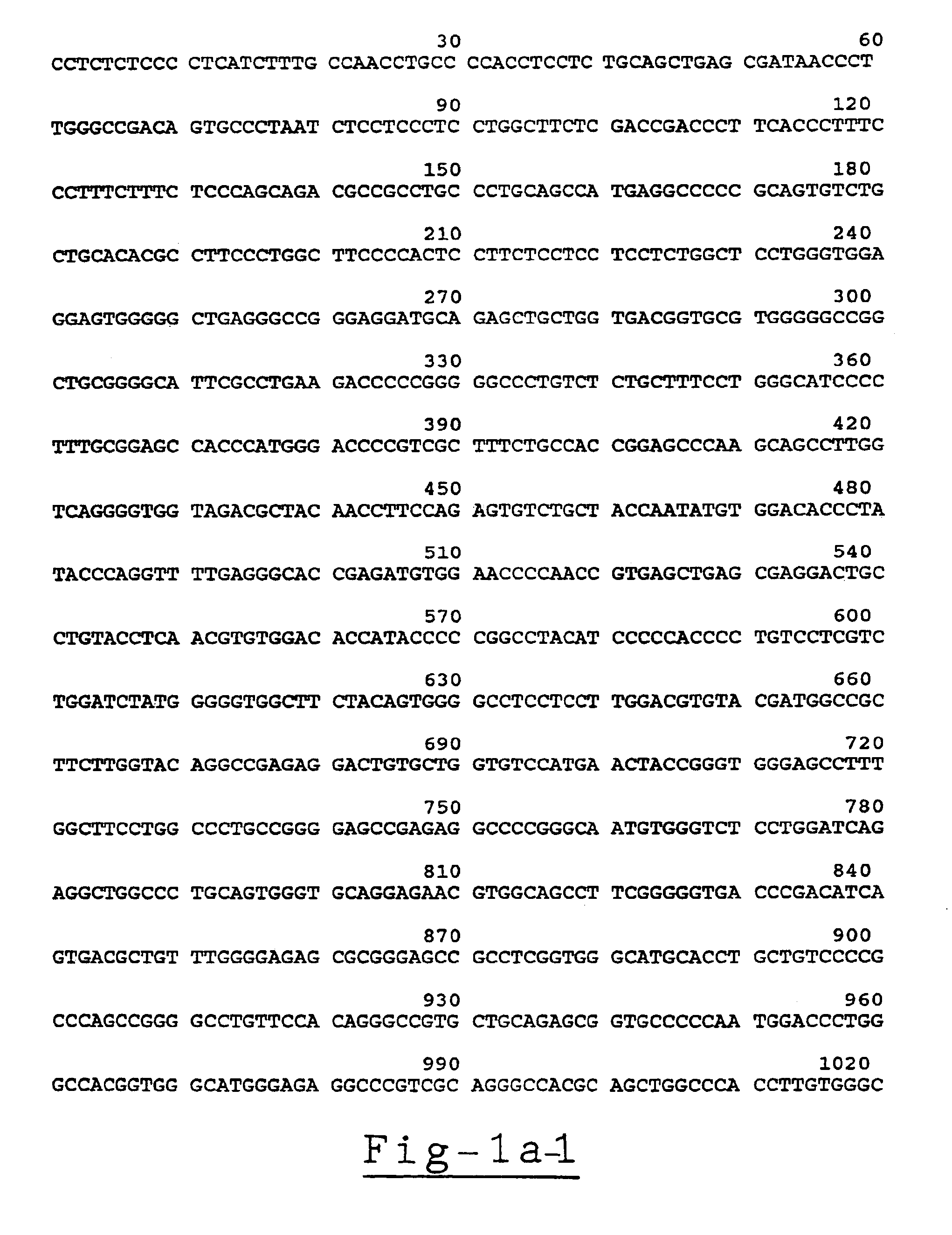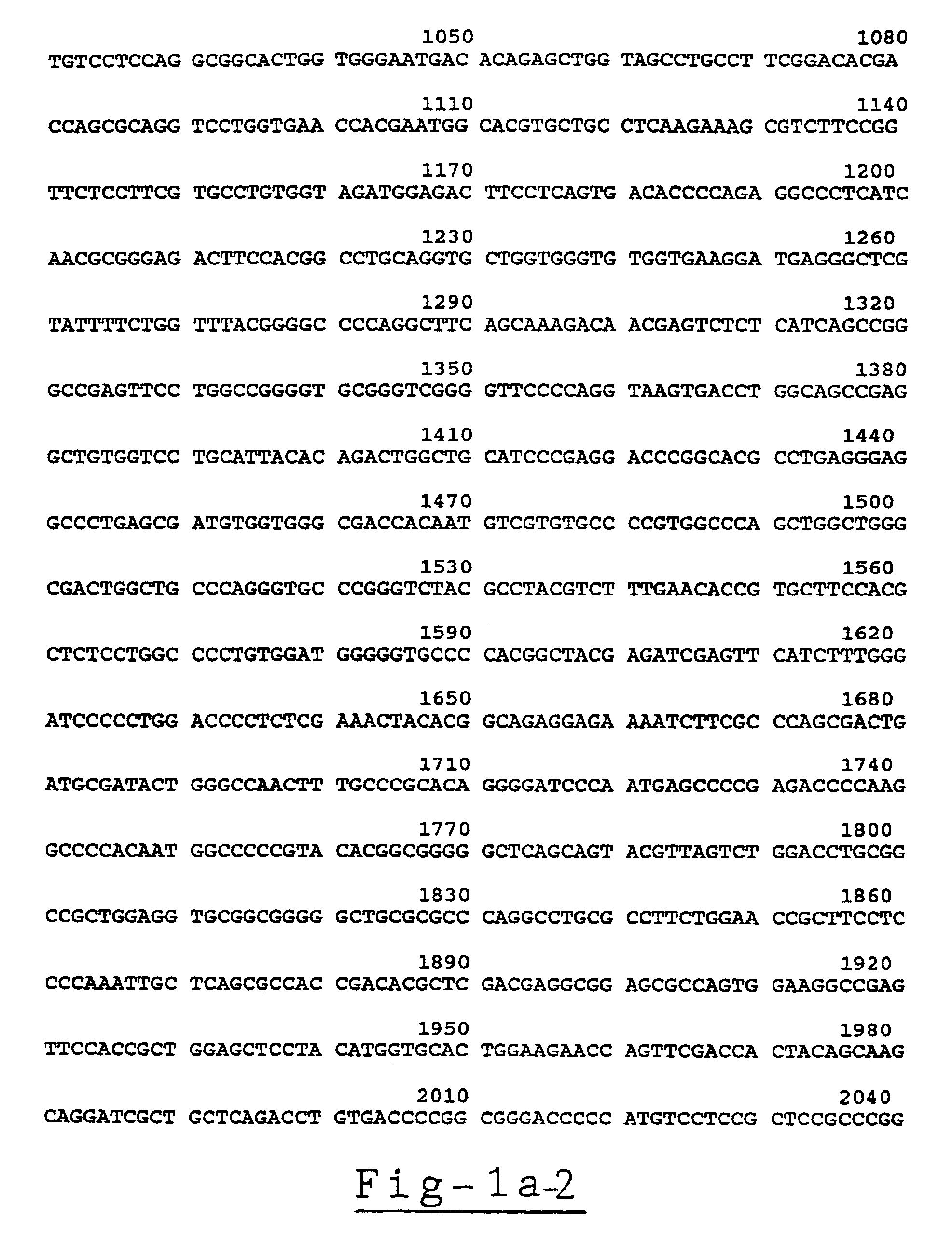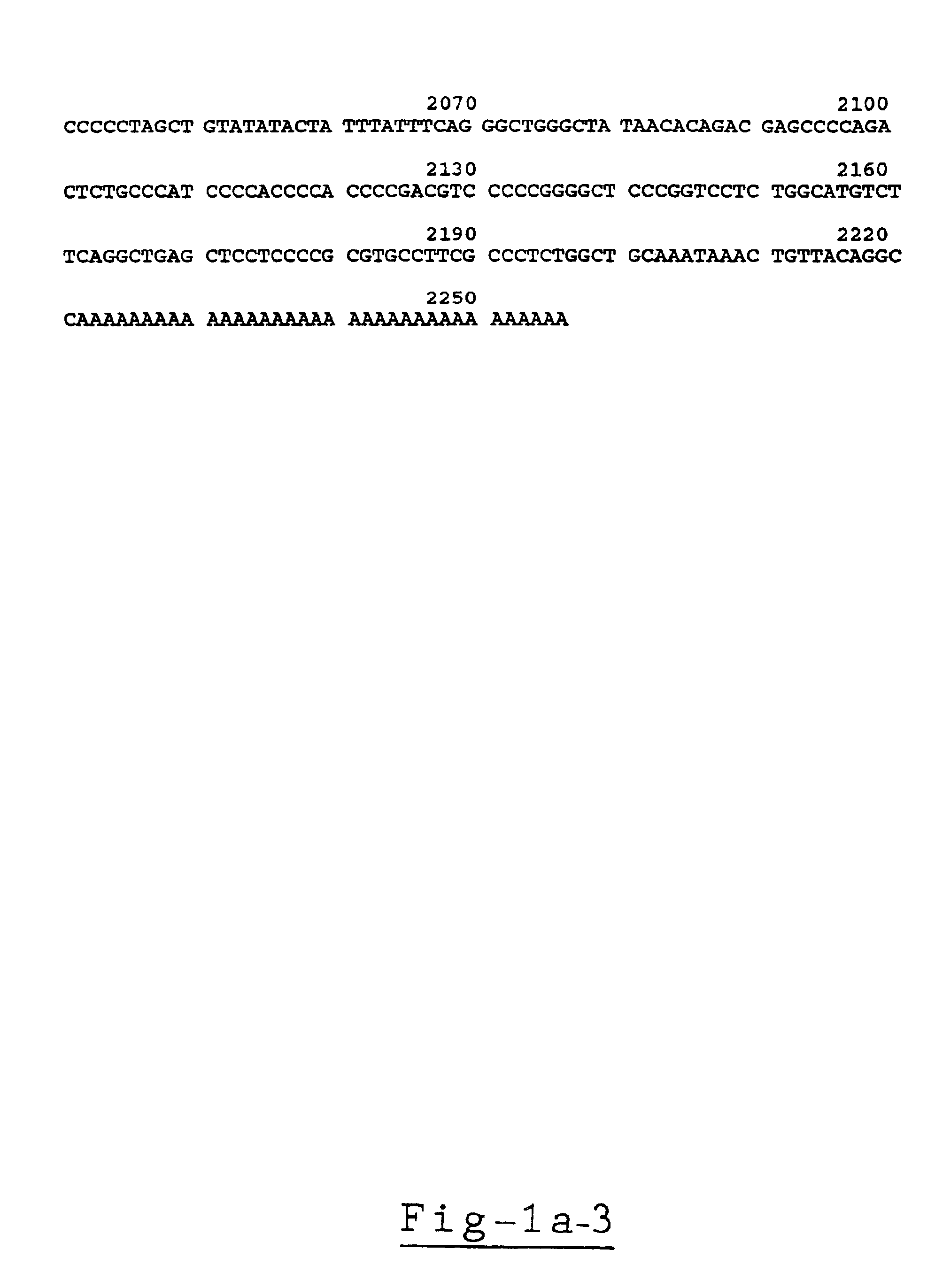Transgenic non-human mammals producing a cholinesterase in their milk
a technology of cholinesterase and non-human mammals, which is applied in the field of new human acetylcholinesterase (ache) encoding dna sequences, can solve the problems of insufficient cholinesterase to completely counteract the side effects of inhibition, and no effective in vivo system has been developed to allow it, so as to improve the mg, increase neuromuscular transmission, and increase muscle strength
- Summary
- Abstract
- Description
- Claims
- Application Information
AI Technical Summary
Benefits of technology
Problems solved by technology
Method used
Image
Examples
example 1
[0159]Analysis of the Acetylcholinesterase Gene Sequence, the mRNAs Transcribed Therefrom and the Translation Products of the mRNAs
[0160](a) cDNA and genomic clones and DNA sequencing. The genomic GNAChE clone and the HAChE recombinant transcription construct were as described (Soreq, et al., 1990). Deletion of 94 bp from HAChE at position 1616-1710 by BamHI excision and religation created the control plasmid HdAChE for the quantitative RNA-PCR experiments.
[0161]Double and single stranded DNA was sequenced as detailed previously (Soreq, et al., 1990), except that annealing of AChE-specific sequencing primers was initiated at 72° C. to circumvent the high G,C-rich content of the analyzed sequences. Also, the sequencing primers were closely spaced and reading of the sequence included comparison of sequence data from both directions and with variable distances from the primers employed.
[0162](b) PCR primers and the RNA-PCR procedure. The following PCR primers were employed:[0163]1) E3 / ...
example 2
[0202]Expression of Human Acetylcholinesterase (HAChE) in Xenopus laevis embryos
[0203](a) Expression vectors. A number of vectors were constructed, by standard genetic engineering procedures, and contain different regions of the human ACHE gene (see Example 1). The construct that was analyzed most thoroughly was the one encoding the brain and muscle form of AChE, namely, the one encoding exons 2, 3, 4 and 6 (SEQ ID NO:1) of the AChE gene, this construct (also called CMVAChE or CMVACHE) being described previously in Velan et al., 1991. All of the constructs are pGEM derivatives and have the AChE coding regions under the control of the cytomegalovirus (CMV) immediate-early gene enhancer promoter sequence and an SV40 polyadenylation site. In FIG. 7 there is shown schematically the various constructs:
[0204](i) CMVACHE, a construct containing the cDNA encoding human brain AChE (exons 2, 3, 4 and 6), the CMV promoter and SV40 polyadenylation site, which was constructed using the pGEM expr...
example 3
[0238]Establishment of Stably Transgenic Mouse Lines Expressing the Human AChE Gene
[0239](a) Establishment of transgenic mouse pedigrees. Two DNA constructs were employed: one with the pan-active cytomegalo-virus (CMV) promoter (Velan et al., 1991) and AChEcDNA (see Example 2 above) and the other with 600 bp from the authentic human ACHE promoter followed by the first intron from the AChE gene HpACHE (Ben Aziz-Aloya et al., 1993) to improve its regulation in the transgenic mice, and the AChEcDNA sequence encoding this enzyme. Both transgenes included the full coding sequence for human AChE (Soreq et al., 1990) and were shown to be expressible in Xenopus oocytes and embryos, with the CMV promoter being 20-fold more efficient than HpACHE in promoting AChE production (Ben Aziz Aloya et al., 1993, Seidman et al., 1994). FIG. 15 presents these two DNA constructs, their composition and the positions on them of PCR primers employed to detect their presence in the transgenic mice (for detai...
PUM
| Property | Measurement | Unit |
|---|---|---|
| pH | aaaaa | aaaaa |
| pH | aaaaa | aaaaa |
| wet weight | aaaaa | aaaaa |
Abstract
Description
Claims
Application Information
 Login to View More
Login to View More - R&D
- Intellectual Property
- Life Sciences
- Materials
- Tech Scout
- Unparalleled Data Quality
- Higher Quality Content
- 60% Fewer Hallucinations
Browse by: Latest US Patents, China's latest patents, Technical Efficacy Thesaurus, Application Domain, Technology Topic, Popular Technical Reports.
© 2025 PatSnap. All rights reserved.Legal|Privacy policy|Modern Slavery Act Transparency Statement|Sitemap|About US| Contact US: help@patsnap.com



